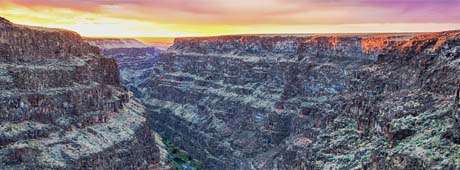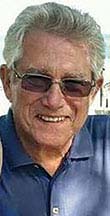No products in the cart.
The River High

A Fast-Water Ride
By Mike Blackbird
On a sunny Sunday in February 1992, I traveled down from northern Idaho and went with a friend named Charlie Clark on a land odyssey across the Bruneau Plateau in the southwestern corner of the state. Winter still held its grip on the high desert, though there was a hint of an early spring in the air.
The Bruneau Plateau comprises a large part of Idaho’s Owyhee County, which is bigger than the combined states of Rhode Island and Connecticut. The plateau is the caldera remnant of a supervolcano that erupted ten million years ago. Supervolcanoes don’t form cones like the volcanoes we’re familiar with. Rather they form magma chambers under the earth’s crust close to the surface. Over time the chamber increases in size while building up tremendous pressure before erupting. The Bruneau caldera is forty to sixty miles across. When it erupted, it must have been one hellacious explosion, because as recently as 1971 a six-and-a-half-foot layer of ash from it was identified nine hundred miles away in Nebraska. The last supervolcano to erupt was Toba in Sumatra, seventy-four thousand years ago. I remember well the Mt. St. Helens eruption in 1981 and the disruptions of everyday life created by its two inches of ash, but Toba was ten thousand times bigger than that. So much ash would threaten life in a good part of the world. Judging from fossils found in the Bruneau ash in Nebraska, it carried out that threat.
Today, the Bruneau Plateau’s ancient caldera lies in the rain shadow of the Cascades. This is not only a high-desert world of lava, sagebrush, and distant mountain panoramas but one of the largest intact desert ecosystems in the West. Home to some of the nation’s rarest fish, wildlife, and plant species but with less than one person per square mile, this biologically rich and diverse high desert is also lonesome country.
This content is available for purchase. Please select from available options.
Purchase Only
Purchase Only


Comments are closed.